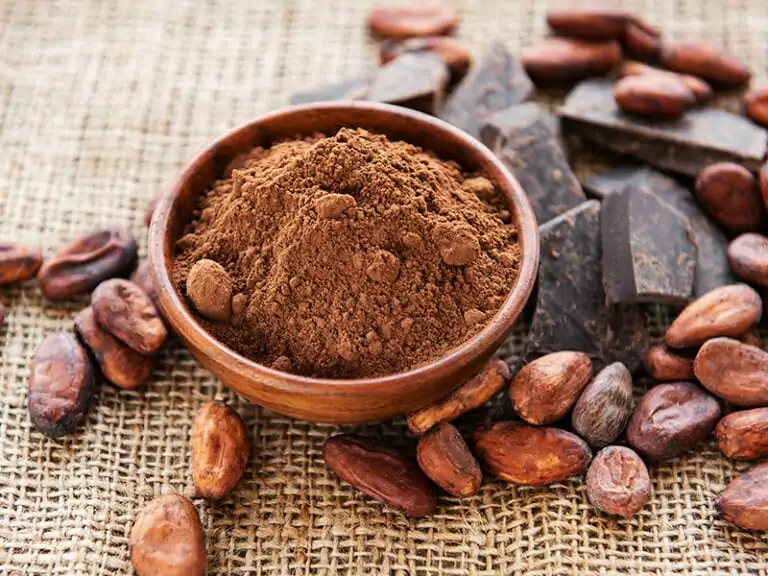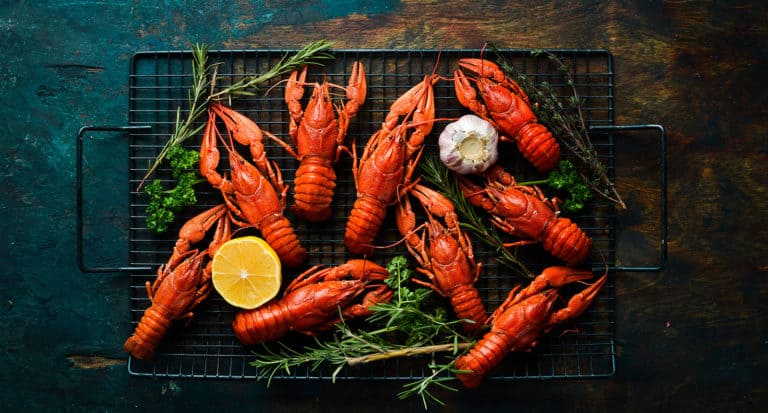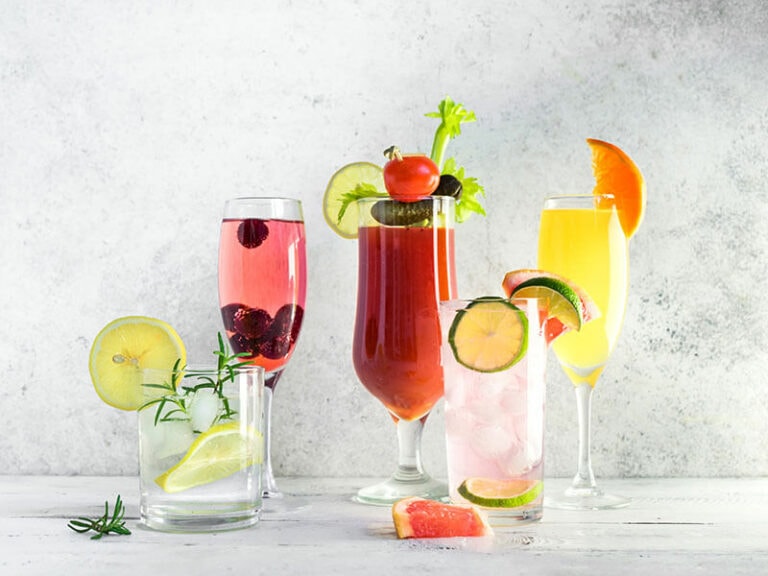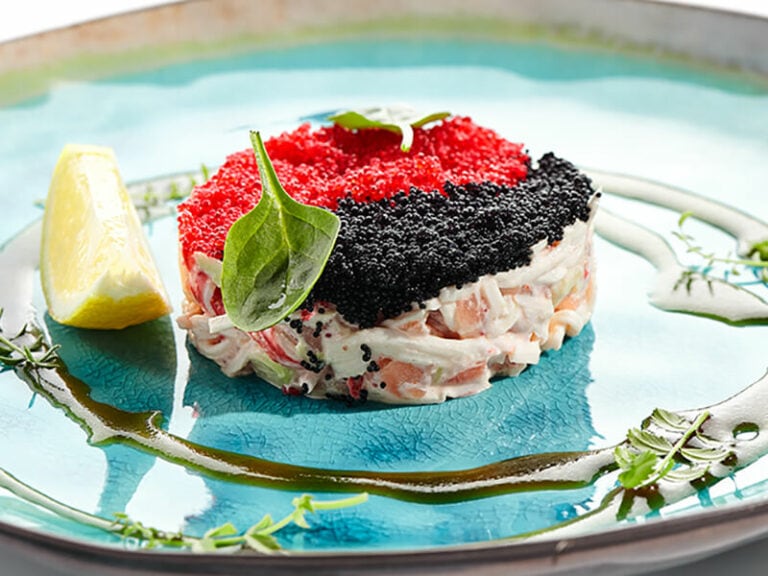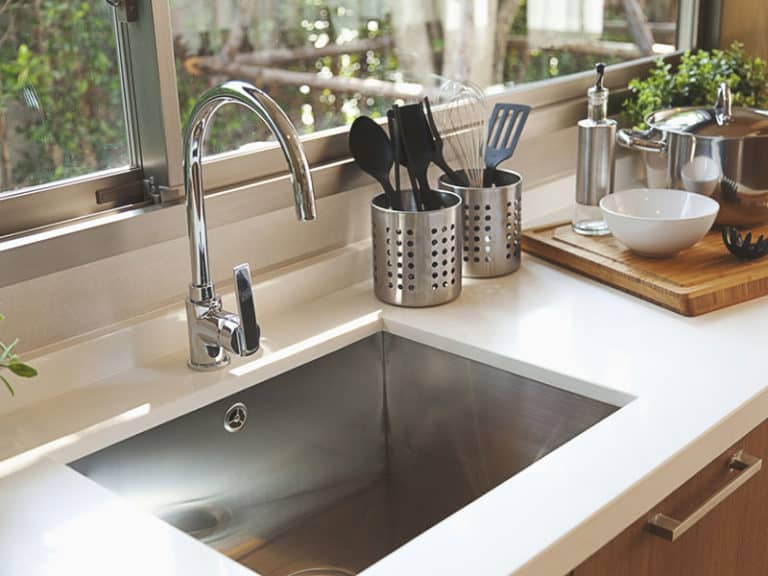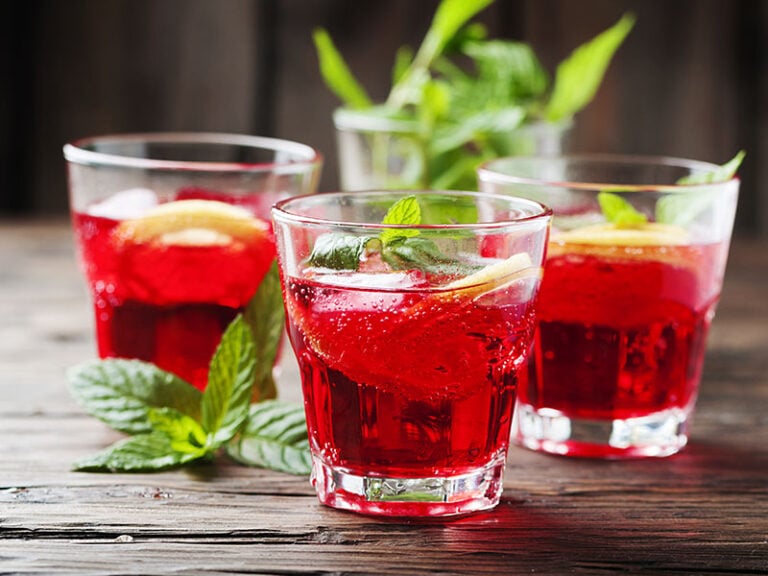You may have heard about the pros and cons of hard-anodized cookware that famous chefs talk about on TV shows. However, among so many cookwares in the market, you might be wondering whether your choice is good enough to make good dishes.
I am here to give you the ultimate guide to hard-anodized cookware. In this post, you will see a clear breakdown of all benefits and disadvantages of this cookware type, learn how it is made, how it works, and useful tips to choose the best hard-anodized stuff.
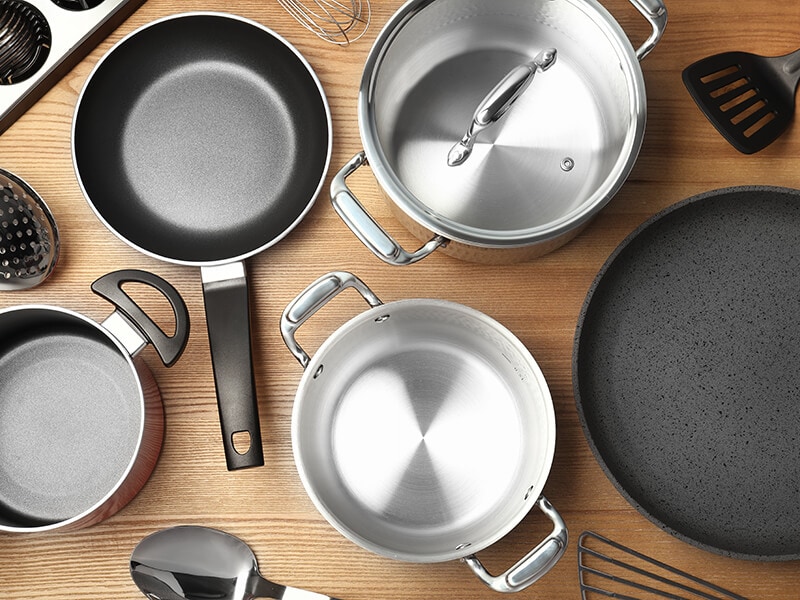
Definition Of Hard-Anodized Cookware
First and foremost, let’s briefly understand hard-anodized before talking about anything else. It should be easy enough for you to have a grip on this popular cookware item.
Definition
Hard-anodizing is the process of enhancing metallic surface thickness by treating the object through an electrolytic passivation procedure to form the non-stick feature of the cookware. As a result, the utensil is shinier and harder to damage through acidification.
Thanks to aluminum’s light and non-conductivity compared to steel or copper, it’s more popular as a material for hard anodization. The automobile and the commercial cookware industry are two industries that apply this technology the most.
What Are PTFE And PFOA?
You may find some confusing words like PTFE and PFOA on the label or the news regarding hard-anodized pans and other utensils.
PTFE (commonly known as Teflon) is a special polymer essential in the hard-anodizing stages, which offers durability to the final result. The hydrophobic coating provides the cookware with non-wetting, high density, and high heat resistance.
PFOA is another chemical substance used as an additive for the production of PTFE. However, the application of PFOA in the manufacturing of hard-anodized coating has been stopped due to its harmful property.(1)
The question here is PTFE and PFOA safe? Scientifically, both of them do not harm the user even if the cookware has PFOA substance because, after the anodizing process, it is hard to leach into the air or food.
Hard-Anodized Technology In Manufacturing Household Appliances
Because of the demand for non-stick frying pans, most manufacturers use this technology in making their cookery line. You can refer to the following steps for how companies produce hard-anodized appliances.
- Step 1: The aluminum surface is pasteurized to remove impurities.
- Step 2: Aluminum utensils remain submerged in sulfuric acid and exposed to a high electrical current to kick-start the hard-anodizing process.
- Step 3: The combination creates a thin, non-metallic conversion coating for the aluminum, giving the cookware a chromatic gray color.
The hard-anodized cookware is tough and has a smooth surface, making them superior to traditional cast iron pans. By the way, I will also present some drawbacks below, so keep reading.
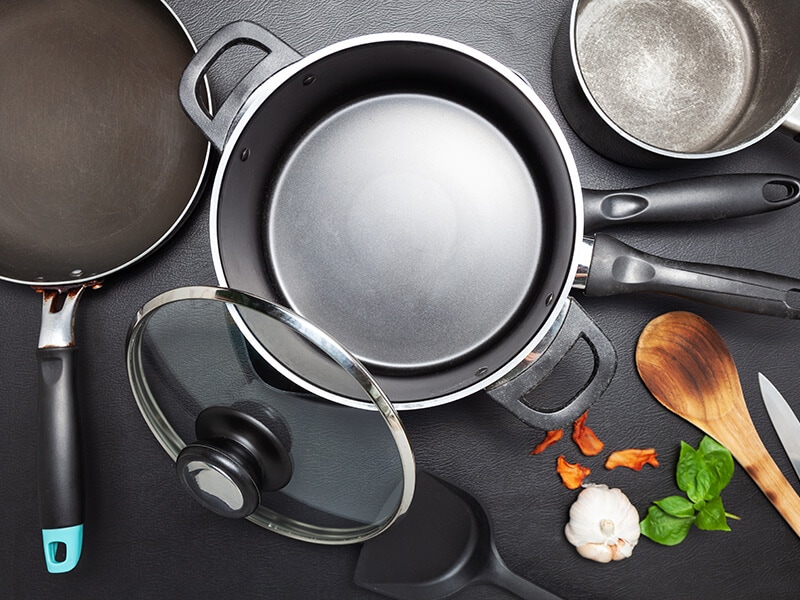
Pros And Cons Of Hard-Anodized Cookware
Everything has both sides. After you have an overview of how hard-anodized cookware was made, finding out the advantages and disadvantages would give the worth of every penny.
Incredible Advantages Of Hard-Anodized Cookware
This is a checklist of whether it is a suitable utensil for you. Relate the following content to your actual demand and cooking habits. You can look at the table below to summarize the most outstanding points.
1. Good Heat Conduction
Anodized aluminum has a more effective thermal conductivity than others; however, many people often overlook it. An excellent heat-conductive surface means faster cooking, saving you valuable time in the kitchen.
The round surface of anodized cookware helps distribute heat to the food evenly, especially with recipes that require the constant adjustments of fire.
The cookware retains heat brilliantly, keeping the food warm for some time after cooking. Furthermore, the highly responsive surface helps the utensil transfer heat to the food quickly, so you can adjust the heat.
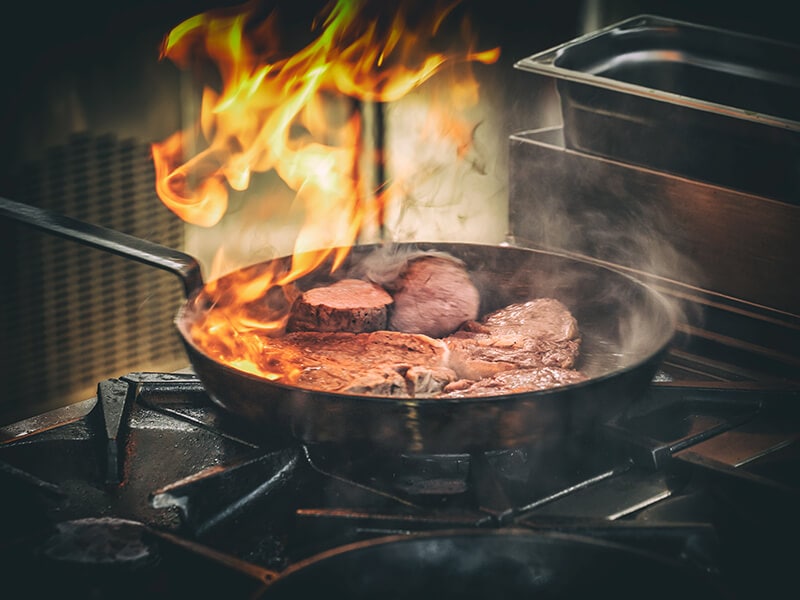
2. Versatility
Regular metallic utensils can sustain damage in the long run. However, it is different in hard-anodized cases, where the coated surface can’t peel off easily, thus prolonging the equipment’s longevity.
The versatility is also good in cooking delicate dishes; hard-anodized pans allow you to flip food smoothly without any resistance. It is handy for making dishes with high heat or even recipes that require a long simmering time.
3. Corrosion Resistance
One of the most common concerns about cooking equipment is that they have scratches and dents in a short period of use. In some cases, it is even shorter if you rub the tools too strongly or often apply salt on the surface.
This doesn’t tend to happen with hard-anodized ones, which are extremely resistant to damage and erosion. Due to its strong composition, the hard-anodized pan cannot easily scratch, dent, or peel over time like traditional aluminum or steel.
One thing to note is that you shouldn’t use an abrasive sponge to clean a hard-anodized surface since it can wear off the coating gradually.
4. Easy To Use And Clean
The non-stick coating makes the cookware easy to clean due to its smooth surface. You don’t have to lose half an hour to rub the surface cleanly from gunks and sticky foods.
Besides, it doesn’t require any special utensils to use. You can use wooden chopsticks or a metal ladle that you already have to work on a hard-anodized surface. In the long run, this saves you quite a bit.
Since scrubbing is not viable for cleaning hard-anodized cookware, you should use simple methods involving less force. Ideally, you may soak the anodized pan or pot in warm water before applying detergent for cleaning.
Storing is another good point about the hard-anodized line, as it is free from oxidation. You can easily put it in the cupboard or hang it next to the sink without damaging it.
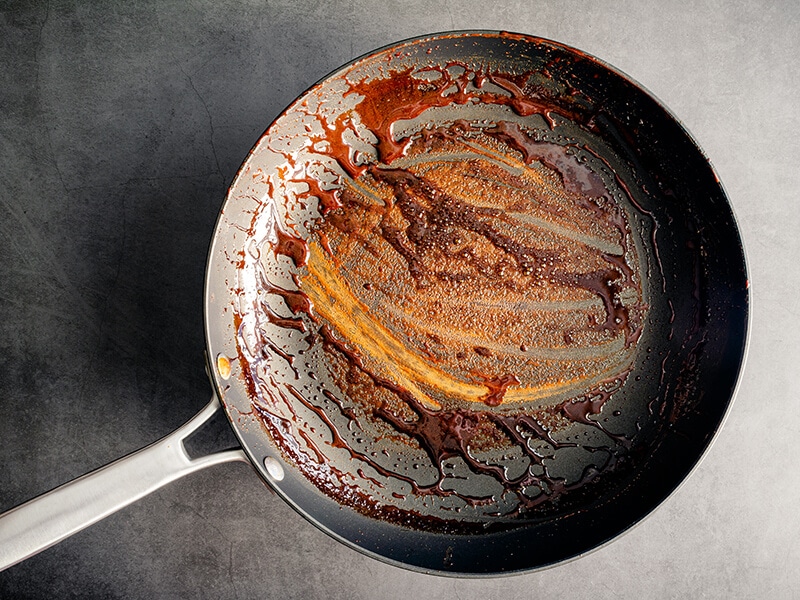
5. High Durability
Because of its strength, the hard-anodized is one the most durable options among kitchen equipment. The anodizing process makes the cookware less vulnerable to corrosion, scratches, or rust.
Unlike other types of cookware, hard-anodized one doesn’t require constant maintenance and repair, so you don’t have to buy a new one every year.
Typically, the hard-anodized cookware will last 10 years with proper maintenance, making it a perfect investment in your kitchen.
6. Trusted By Professionals
The hard-anodized cookware is also a great assistant that can fit the bill for a wide range of cuisine in your kitchen, from the juicy pan-fried lamb and shiny salmon pasta to your costly steak.
Additionally, professional chefs prefer having a hard-anodized pan, especially in a professional cooking environment. Thanks to the non-stick coating, the chef can wipe off the surface with a tissue, so the pan is ready for the next order.
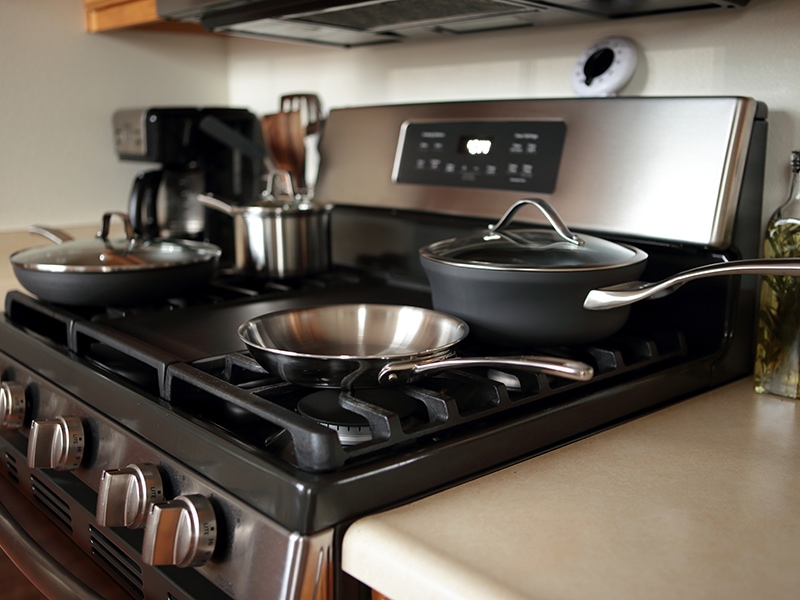
7. No Metal Leaching
A prime problem that regular cookware encounters is it will one-day leach metal into your food. In the long run, this process can affect people’s health and may even infuse a discomfort metallic taste to dishes.
However, hard-anodized utensils help users from ever facing this situation. The thick coating creates a safety layer that prevents the metal from escaping and leaching into food. Better yet, the utensil can also handle acidic food (lemon or vinegar) that other regular options can’t.
Disadvantages Of Hard-Anodized Cookware
People love hearing about the advantages, but the cons are also crucial in buying a hard-anodized item. Here are some ideas you should consider to have a better user experience. Here are a few reasons that may make you think twice.
1. Price
When you compare anodized utensils with the other cookware options, hard-anodized is way more expensive. A complete set can be relatively pricey, making you wonder if it is a good investment. Depending on the brand and line of product, the price can fluctuate.
However, by the durability, the hard-anodized utensils would inevitably last much longer than traditional or typical non-anodized ones. It might be beyond your budget, but still worth considering in the long run.
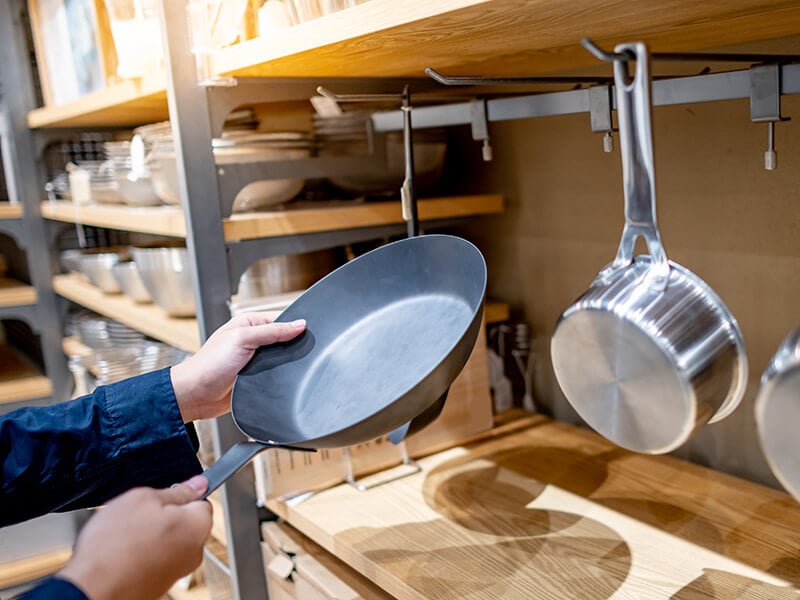
2. Weight
Although it is pretty much the same as cast iron or stainless steel, hard-anodized aluminum is slightly heavier than non-anodized aluminum. If your kitchen is relatively small, with hangers that can’t handle the weight, hard-anodized utensils may pose a slight problem.
3. Heating Risk
While the heat responsiveness of hard-anodized cookware is an overall advantage, as mentioned above, there is an issue that high temperature can pose a threat to this cookware over time.
It is unsafe if the cookware is used on the top stove with a temperature higher than 280°C (536°F) as it ruins it over time. Rapid and overheating is also a failure with some recipes if you don’t take it seriously.
NOTE: As a metal utensil, don’t put hard-anodized cookware in the microwave; it can cause overheating and sparkling.
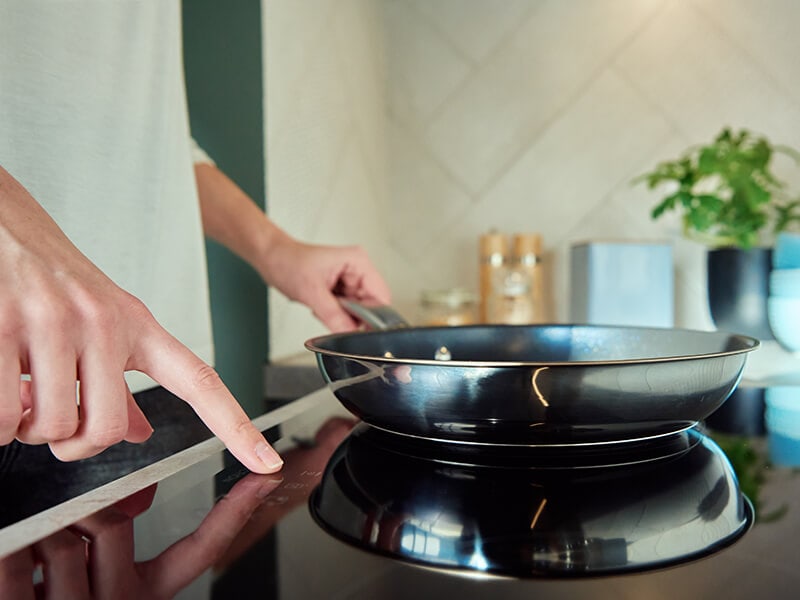
4. Incompatibility With Cooking Spray
On non-stick cookware, cooking spray is not advised because it will burn and harm the non-stick coating. Day by day, the remaining gunk will build up, leading to a degrading coating and no longer having the non-stick capability.
Instead of cooking spray, you can use oils or butter to disperse a smooth layer over the surface of your pan.
5. Quality Variation
Like many other goods, the quality varies depending on the brand, the technology they use, and the manufacturing process. There are many hard-anodized cookware lines with a certain fluctuation in quality.
Each product has a different feature, from the thickness of the coating to anodizing technology that makes the price vary across different brands. Not to mention that weight or design can affect your cooking excitement.
6. Hard To Use With Other Cookery Equipment
To achieve most of the cooking requirements, hard-anodized cookware is not a perfect match for all other members in your kitchen.
- Dish Washer
Although this metal utensil has high corrosion resistance, using it in a dishwasher would degrade the coating. You should do the cleaning by hand to guarantee optimal longevity.
- Induction Cooker
A hard-anodized pan doesn’t go well on an induction cooker because the equipment requires a magnetic material at the contact area.
If you want to use an induction cooker, you need to buy a metal disc that is added to the bottom to connect with the aluminum core. In this case, gas or electric stoves are a more viable choice.
- Strong Detergent
Harsh soaps or heavy scrubs will also harm hard-anodized cookware as much as high-temperature cooking does. To protect the coating, you should use baking soda, lemon powder, and mild soap.
Health Risks Of Using Hard-Anodized Products
After weighing the pros and cons of hard-anodizing, health issues are another problem that customers often wonder about. That is, whether the anodized cookware is safe for health.
According to the CDC, exposure to high levels of aluminum can negatively affect your health, including coughing, lung problems, and abnormal chest X-rays.(2)
Fortunately, thanks to the anodization process, the aluminum core is completely isolated from outside elements, preventing the metal from leaching into food. Therefore, I can say hard-anodized cookware is safe for your health.
However, taking care of your cookware is also good to ensure the coating is protected and does not poison or at least degrade your meal’s flavor.
Proper Care And Use For Hard-Anodized Cookware
To ensure the best-cooked dishes, safety to use, and other benefits of hard-anodized cookware, there are some pieces of advice you need to follow to make the most out of the situation.
Season
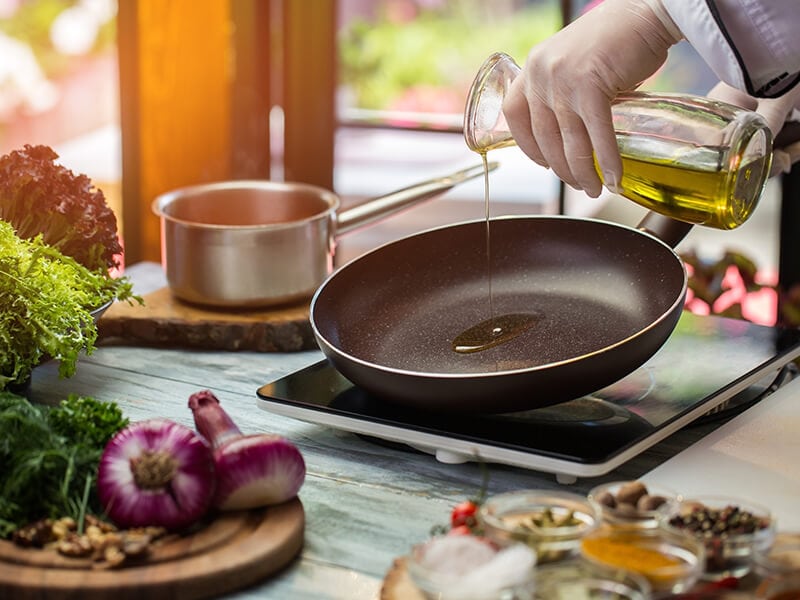
Seasoning helps remove impurities stuck on the surface for a long time by letting oil or butter form a protective layer. Normally, people place the cookware at a high temperature before applying oil evenly over the surface until it begins to smoke.
Seasoning your cookware is crucial not only for hard-anodized but also the cast iron and stainless steel types. You should do it at least twice a year to renew the protective layer.
Learn how to season your cookware to render it smoother.
Soak Before Cleaning
Once you finish cooking with your cookware, it’s unwise to throw them directly into your sink with cool water. The instant temperature change may deform the utensil or damage the coating.
Ideally, you should allow the pans or pots to cool down gradually before cleaning them with cold water. Typically, 15 – 20 minutes of soaking should be enough to loosen the gunk and sticky food on your cookware.
Physical Contact
Most don’t think twice about stacking their hard-anodized pans or pots because it helps them save storage space. However, you should be more careful when organizing your utensil since scratches are the most common damage to hard-anodized equipment.
In the long run, the scratches may become more severe to the point they may expose the inner aluminum core, thus, reducing the non-stick capability of your pans or pots.
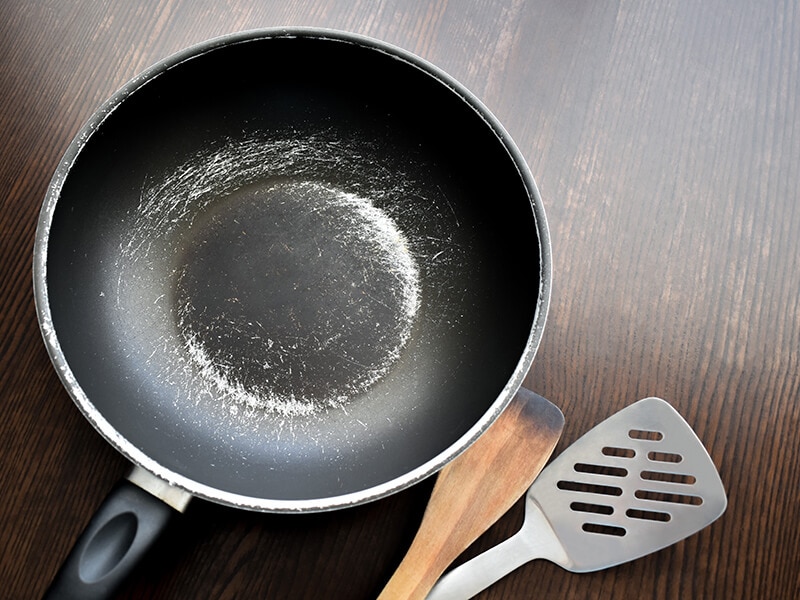
Notes To Buy High-Quality Hard-Anodized Cookware
Beyond the advantages and drawbacks, here I have described some tips and common myths when choosing hard-anodized cookware.
Prioritize The Brand
“Bait and switch” is not new to many in the market as it is a reliable cookware brand. A few of those are labeled “hard-anodized,” with some pans consisting of different materials aside from aluminum.
Due to high durability and superior advantages, it still bangs the buck for you in the next few years, so don’t be too harsh with the starting price point. Choosing a reputable brand helps you feel more secure about its true quality.
T-fal
Famous for Thermo-Spot technology, T-fal innovated their products with concentric rings on the base that would turn red if they got the most optimal cooking temp. They are also the best budget-friendly pots and pans you can find in the market.
For starters, you may try the T-fal, Ultimate Hard Anodized, Nonstick 5 Qt. Jumbo Cooker for simple cooking on your stovetop. Alternatively, the T-fal, Ultimate Hard Anodized, Nonstick 14 in. Wok is a better option for dealing with Asian or stir-fried dishes.
Product set of All-Clad is now even more durable because of the design of the stainless steel bonded base to not be wrapped over time. They are also PFOA-free, so you don’t have to worry about toxins leaching out.
Home chefs may find the All-Clad HA1 Hard Anodized Nonstick Frying Pan with Lid a reliable choice for handling a variety of cooking situations. For stew recipes, it’s time to call in the artillery with All-Clad Hard Anodized Nonstick Soup Stock Pot to do your job.
Cuisinart
Cuisinart’s quantanium interior is well known for its high performance. You can also refer to their lifetime warranty for some lines of products.
A simple design like the Cuisinart 623-24 Chef’s Classic Nonstick Hard-Anodized has high resistance to physical damage and can withstand a temperature of up to 500°F in the oven. Baking fans can also get the Chef’s Classic Nonstick Hard Anodized Double Burner Griddle.
Full Set Is Not A Must
You don’t have to purchase all the kitchen equipment in the same color, brand, and design. Review your demand, and get the exact cookware you need.
Bringing home the heavy-gauge collection costs a lot, but you can hardly use all of them daily. It is also about space optimization and a minimalist lifestyle.
Not All Non-Stick Pans Are Hard-Anodized
Briefly, hard-anodized cookware has an aluminum-based material, and the coating is hard-anodized.
The base material can have many types. Typically, it can be made from cast iron, carbon steel, or stainless steel. Interestingly, ceramic or enamel is also a relatively popular pick to make hard-anodized appliances.
Overview for the difference between hard-anodized and non-stick cookware.
FAQs
I know you may have remaining questions that are dying for an answer. That’s why this FAQs section is the perfect place to resolve your curiosity.
Have You Made Your Mind About Hard-Anodized Cookware?
Now you know all of the pros and cons of hard-anodized cookware and its technical background. I hope you can finally decide whether to purchase it or not.
To sum up, it would be a game-changer in your kitchen and cooking experience if you know the guideline to use it properly. Otherwise, it would be a non-worthy expensive item because the coating would peel off and ask you for replacement.
Send this article to your mate, who can chat and discuss it with you more. Don’t forget to comment if you have any questions. See you again with much more useful information to lead your kitchen up to higher steps. Peace!
References
- Spanne, A. (2022) What’s the difference between pfas, PFOS, PFOA, PTFE, and Genx?, EHN.
- Aluminum (2015) Centers for Disease Control and Prevention. Centers for Disease Control and Prevention.

